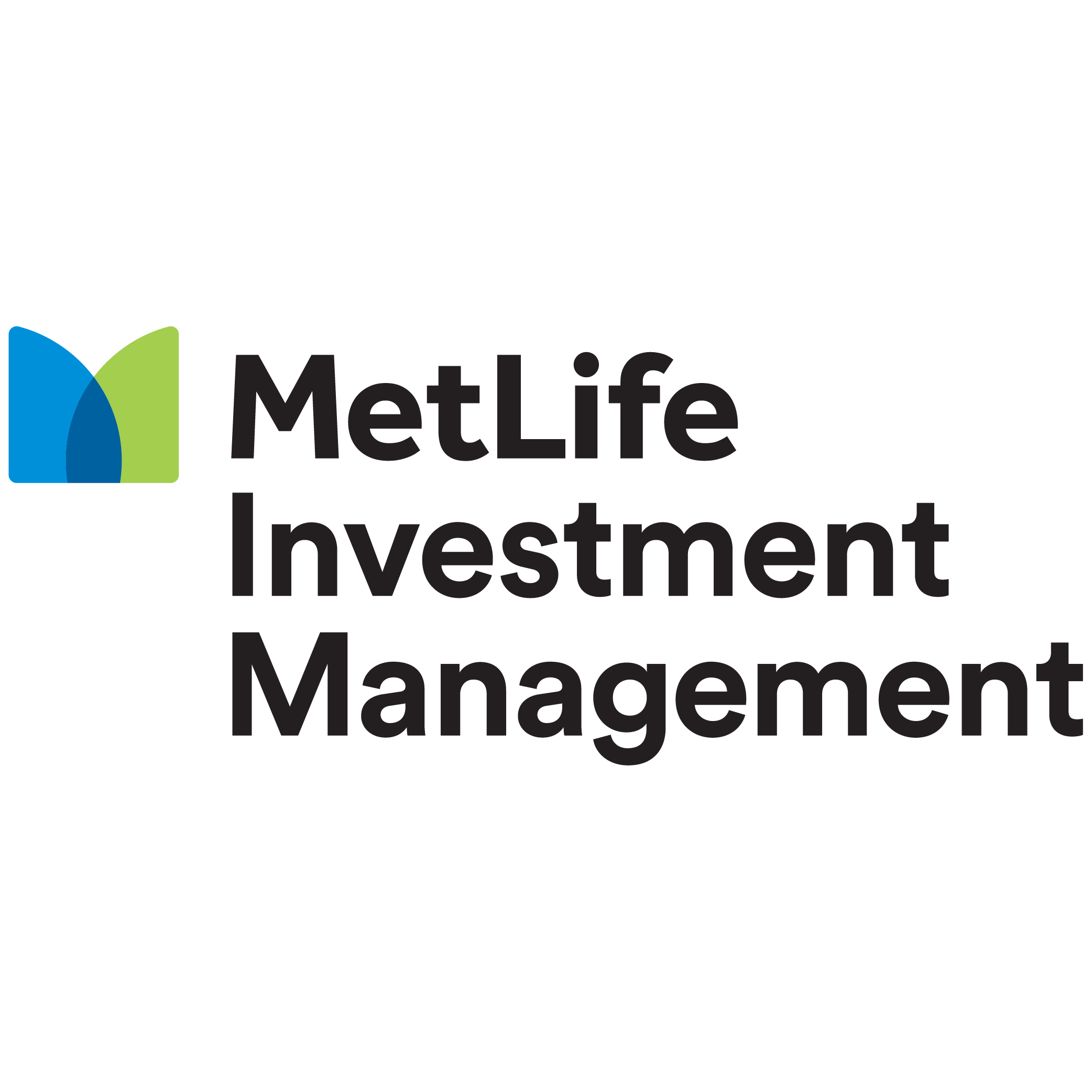Explore web search results related to this domain and discover relevant information.
The national debt is composed of distinct types of debt, similar to an individual whose debt may consist of a mortgage, car loan, and credit cards. The different types of debt include non-marketable or marketable securities and whether it is debt held by the public or debt held by the government ...
The national debt is composed of distinct types of debt, similar to an individual whose debt may consist of a mortgage, car loan, and credit cards. The different types of debt include non-marketable or marketable securities and whether it is debt held by the public or debt held by the government itself (known as intragovernmental).The national debt is the amount of money the federal government has borrowed to cover the outstanding balance of expenses incurred over time. In a given fiscal year (FY), when spending (ex. money for roadways) exceeds revenue (ex. money from federal income tax), a budget deficit results. To pay for this deficit, the federal government borrows money by selling marketable securities such as Treasury bonds, bills, notes, floating rate notes, and Treasury inflation-protected securities (TIPS).The national debt is composed of distinct types of debt, similar to an individual whose debt consists of a mortgage, car loan, and credit cards. The national debt can be broken down by whether it is non-marketable or marketable and whether it is debt held by the public or debt held by the government itself (known as intragovernmental).However, the Treasury can use extraordinary measures authorized by Congress to temporarily suspend certain intragovernmental debt allowing it to borrow to fund programs or services for a limited amount of time after it has reached the ceiling. Since the United States has never defaulted on its obligations, the scope of the negative repercussions related to a default are unknown but would likely have catastrophic repercussions in the United States and in markets across the globe.


Anton Kobyakov, a Putin advisor, alleges the U.S. is manipulating cryptocurrency and gold markets to alleviate its $35 trillion national debt. He claims Washington aims to "rewrite the rules" to position these assets as alternatives to the traditional currency system, addressing declining trust ...
Anton Kobyakov, a Putin advisor, alleges the U.S. is manipulating cryptocurrency and gold markets to alleviate its $35 trillion national debt. He claims Washington aims to "rewrite the rules" to position these assets as alternatives to the traditional currency system, addressing declining trust in the dollar.Anton Kobyakov, a senior Russian advisor to President Vladimir Putin, has alleged that the United States is orchestrating a scheme to offload its $35 trillion national debt by leveraging cryptocurrencies and gold. Kobyakov stated that Washington intends to "rewrite the rules" of these markets, positioning them as alternatives to the traditional global currency system.The debt has been driven by decades of budget deficits, large-scale stimulus packages, military spending, and entitlement obligations such as Social Security and Medicare. In a recent statement posted by RT’s X account, Kobyakov said, "The US is now trying to rewrite the rules of the gold and cryptocurrency markets.›Putin’s advisor warns of US conspiracy to wipe out $35 trillion debt using crypto and gold market
U.S. stocks tumbled as investors digested new economic data as well as Friday's ruling that most of President Donald Trump's sweeping tariffs are illegal.
"If we win this, the stock market is going to go right through the roof," the president added. That scenario could also further stress the country's financial situation and $37 trillion in debt.Wall Street is weighing a court ruling's potential impact on tariff refunds while businesses warn about prices going up.U.S. Treasury yields, already elevated by broader investor worries about debt levels and economies elsewhere, especially Europe, spiked to as high as 4.97% for a 30-year U.S."We are so strong now and we are so respected and ... the stock market is down today because of the possibility" that tariffs could be permanently blocked, Trump told Salem Radio.

The course will describe the major players in Debt Capital Markets, key institutions, broad empirical regularities, and analytical tools that are used for pricing and risk management. Some parts of the course will be analytical while others will be largely institutional.
- Structural models of default: Modeling credit risk, credit spreads and their behavior, Distance to default, forecasting rating changes, high-yield and investment-grade debt markets - Government, Agency and Corporate markets - Municipal markets - MBS: Structure of MBS markets, prepayments, Option Adjusted Spreads, Pass-through securities, REMICs, risk measures - Asset-backed markets - Derivatives: Treasury futures, Interest Rate Swaps, and Single-name credit default swaps - Clearinghouses vs exchanges vs OTC markets
Redirecting
/PRNewswire/ -- 9fin, the leading AI-powered debt market intelligence platform, has launched comprehensive coverage of Latin America. This expansion offers the...
This expansion offers the same depth of coverage and data that has made 9fin indispensable to debt professionals across the US and Europe, tailored for the growing Latin American credit markets.The company serves debt capital markets professionals across high yield bonds, leveraged loans, distressed debt, CLOs, private credit, and asset-based finance.9fin is the faster, smarter way to find debt market intelligence. The AI-powered information platform provides everything needed to analyze a credit or win a mandate in one place. Founded in 2016, 9fin has raised over $87 million in total funding and operates globally with offices in London, New York, Belfast, and Hong Kong, plus local presence across the Americas and APAC.Two decades of bond data, holdings, secondary pricing and expert analysis now available across Latin American debt markets


The air is getting thinner in the sovereign debt mines. The first cough isn’t coming from the usual fragile corners of emerging markets but from the heart of the developed world.
Markets are cyclical storytellers, and every few months the script of the “great bond crisis” is dusted off and performed again. But with each iteration, the stage feels a little more fragile, the chorus of higher yields a little louder, the exits a little more crowded. Governments will, as always, find ways to roll over their debts, paying whatever price investors demand.The U.S., where the debt pile looks more like a mountain range than a molehill, watches its own 30-year yields edge toward 5%. Even Japan—perennial outlier, where bonds typically doze undisturbed—has been shaken awake, with its 30-year yields hitting record highs.They can keep borrowing and saddle themselves with decades of crippling costs, effectively mortgaging growth. They can cut spending or hike taxes, politically toxic levers that threaten social contracts already fraying. Or they can let inflation gnaw away at the debt, a slow-motion theft from savers and a corrosive force on real wealth.The dynamic is simple enough: too much supply, too little appetite. Pension funds—the once-reliable whales of the long-end market—are shrinking back, their capacity to hoover up decades of paper diminished. Asset managers are already stuffed to the gills.
The bond market (also debt market or credit market) is a financial market in which participants can issue new debt, known as the primary market, or buy and sell debt securities, known as the secondary market. This is usually in the form of bonds, but it may include notes, bills, and so on for ...
The bond market (also debt market or credit market) is a financial market in which participants can issue new debt, known as the primary market, or buy and sell debt securities, known as the secondary market. This is usually in the form of bonds, but it may include notes, bills, and so on for public and private expenditures.The bond market has largely been dominated by the United States, which accounts for about 39% of the market. In 2021, the size of the bond market (total debt outstanding) was estimated to be $119 trillion worldwide and $46 trillion for the US market, according to the Securities Industry and Financial Markets Association (SIFMA).According to the Securities Industry and Financial Markets Association (SIFMA), in the first quarter of 2017, the U.S. bond market size was (in billions): The total federal government debts recognized by SIFMA are significantly less than the total bills, notes and bonds issued by the U.S.This figure is likely to have excluded the inter-governmental debts such as those held by the Federal Reserve and the Social Security Trust Fund. For market participants who own a bond, collect the coupon and hold it to maturity, market volatility is irrelevant; principal and interest are received according to a pre-determined schedule.Securities of this late medieval period were priced with techniques very similar to those used in modern-day Quantitative finance. The bond market had begun. Following the Hundred Years' War, monarchs of England and France defaulted on very large debts to Venetian bankers causing a collapse of the system of Lombard banking in 1345.
Bonds market data, news, and the latest trading info on US treasuries and government bond markets from around the world.
U.S. Markets


The latest in depth analysis on the AI Powered Debt Resolution Market explores emerging business models disruptive innovations and strategic opportunities reshaping industries worldwide Developed for professionals across major economies this report empowers decision makers to adapt grow and ...
The latest in depth analysis on the AI Powered Debt Resolution Market explores emerging business models disruptive innovations and strategic opportunities reshaping industries worldwide Developed for professionals across major economies this report empowers decision makers to adapt grow and remain ...Press release - WMR - Powered Debt Resolution Market Set for Dynamic Growth with Key Players like Freedom Financial, Rescue One Financial, and Credit Associates - published on openPR.comThe latest in-depth analysis on the [AI Powered Debt Resolution Market] explores emerging business models, disruptive innovations, and strategic opportunities reshaping industries worldwide. Developed for professionals across major economies, this report empowers decision-makers to adapt, grow, and remain competitive in fast-evolving markets.This Global Debt Settlement Solution Market Report covers worldwide, local, and nation level market size, pieces of the overall industry, ongoing pattern, the effect of covid19 on worldwide Market Research Report Investigations Research Methodology review comprises of Secondary Research, Primary Research, Company Share Analysis,
MetLife Investment Management Emerging Market Debt team seeks to produce attractive risk-adjusted returns over the long term through credit, country, and currency exposure.
Focuses primarily on emerging markets government and quasi-sovereign debt country selection.Focuses primarily on corporate emerging markets debt issuer selection.If you are a resident of, or are present in, the United Kingdom, you represent and warrant that you are (or are acting on behalf of) a “professional investor” as defined under the Markets in Financial Instruments Directive.As an FCA regulated entity MIML is subject to the restriction in section 238 of the Financial Services and Markets Act 2000 (“FSMA”) and the guidance set out in part 8 of the Perimeter Guidance Manual on the promotion of collective investment schemes.


Building on the success of its 2023 tokenized green bond and the $6 billion 2024 multi-currency digital bond, the HKSAR Government is accelerating its vision to position Hong Kong as a global leader in blockchain-based debt markets [4]. This latest initiative, part of a broader infrastructure ...
Building on the success of its 2023 tokenized green bond and the $6 billion 2024 multi-currency digital bond, the HKSAR Government is accelerating its vision to position Hong Kong as a global leader in blockchain-based debt markets [4]. This latest initiative, part of a broader infrastructure bond program, underscores the city’s commitment to leveraging distributed ledger technology (DLT) to modernize capital markets.State-owned enterprises like Shenzhen Futian Investment Holdings and Shandong Hi-Speed Holdings Group have issued blockchain-based bonds in 2025, raising over $1 billion collectively [2]. Notably, Futian’s 500 million RMB digital bond, registered on Ethereum, represents the first public issuance on a public blockchain in Hong Kong [4]. This diversification of platforms—from private permissioned chains to public blockchains—signals a maturing market capable of accommodating varied risk appetites and regulatory frameworks. Despite the technological innovation, digital bonds remain anchoredHong Kong’s third digital bond issuance is more than a technical milestone—it is a strategic declaration of intent. By combining blockchain’s operational advantages with the city’s established financial infrastructure, Hong Kong is redefining the parameters of global debt markets.- Hong Kong’s third digital bond issuance (HK$2.0B, 3.17% coupon) accelerates blockchain adoption in sovereign debt, aiming to establish the city as a global tokenized finance hub. - Corporate entities like Shenzhen Futian and Shandong Hi-Speed issued blockchain bonds on public chains, diversifying platforms and signaling market maturity.

Countries and companies in the developing world are rushing to sell bonds at the fastest clip in at least a decade, taking advantage of high appetite for emerging-market assets to issue debt amid what investors say could be sharper swings ahead in global debt markets.
Last week’s more than $27 billion bond deluge included deals from Saudi Arabia, Turkey’s sovereign wealth fund and Brazilian oil giant Petrobras. The demand is such that JPMorgan strategists raised their forecasts for EM sovereign debt issuance, now expecting a record year for the asset class. HomeBTV+Market DataOpinionAudioOriginalsMagazineEventsMarket DataStocksCommoditiesRates & BondsCurrenciesFuturesSectorsEconomic Calendar
News and analysis for Switzerland's private banking, wealth and asset management community.

Countries and corporations across emerging markets are rushing to tap bond markets at the fastest pace in more than a decade. Taking advantage of strong investor demand for higher-yielding assets, issuers are moving quickly before global debt markets potentially face bigger swings in the months ...
Countries and corporations across emerging markets are rushing to tap bond markets at the fastest pace in more than a decade. Taking advantage of strong investor demand for higher-yielding assets, issuers are moving quickly before global debt markets potentially face bigger swings in the months ahead.Appetite has been so strong that strategists at JPMorgan boosted their projections for emerging-market sovereign bond issuance, forecasting what could be a record-setting year. ... “It’s like a celebration,” said Eduardo Ordonez, debt portfolio manager at BI Asset Management in Copenhagen.Lingering inflation and heavy government borrowing have rattled global debt markets. Investors have been unloading bonds over concerns tied to the UK’s shaky fiscal outlook and political uncertainty in France.Despite turbulence in developed markets, emerging economies have delivered standout returns. Local-currency debt has gained 13% so far this year, while dollar-denominated emerging-market bonds are up more than 8%, Bloomberg indexes show.
Discover what the market value of debt is, how it's calculated using bond pricing formulas, and the key factors that influence its valuation.
The Market Value of Debt refers to the market price investors would be willing to buy a company’s debt for, which differs from the book value on the balance sheet. A company’s debt doesn’t always come in the form of publicly traded bonds, which have a specified market value.Because this debt is reported at book value or accounting value in the financial statements, it is the analysts’ responsibility to calculate the market value, which will be of major importance when calculating the company’s total Enterprise Value.To estimate the Market Value of Debt, an analyst can think of the Total Debt on the books as a single coupon bond, with the coupon being equal to the interest expenses on all debt and the maturity as the weighted average maturity of the debt.Therefore, our calculated MV of Debt is $573,441.15, which can be later used to calculate the Enterprise Value by adding the Cash and Cash Equivalents to our calculated MV of Debt. This value can then be compared with the market cap and used for the calculation of financial ratios to complete the analyst’s toolbox.

Concerns around US debt sustainability ... debt. Adding to this, President Trump has openly stated his preference for a weaker dollar and is expected to pursue policies aimed at curbing dollar strength. A weaker dollar typically gives EMs' central banks room to cut rates. In fact, EMs have considerable scope to cut rates given their well-controlled inflation, historically high market-weighted real ...
Concerns around US debt sustainability are growing, with all three major rating agencies now having downgraded US government debt. Adding to this, President Trump has openly stated his preference for a weaker dollar and is expected to pursue policies aimed at curbing dollar strength. A weaker dollar typically gives EMs' central banks room to cut rates. In fact, EMs have considerable scope to cut rates given their well-controlled inflation, historically high market-weighted real rates of ~ 3%5 and lower debt-to-GDP ratios than DMs.Emerging Markets are not just undervalued—they offer one of the most compelling opportunities in over 15 years. Read on to discover why @Steven Gray thinks it is time to focus on a high-beta recovery play and tap new alpha opportunities.Tap into higher beta as emerging markets gear up to outpace developed peers.With 17.0% net gains to end July, EMs have outperformed Developed Markets (DMs), which lagged at 13.1%. Yet, despite this outperformance, EMs remain deeply undervalued: at 14x forward price-to-earnings, they are 30% cheaper than DMs and a striking 42% cheaper than the US1.

This data set covers borrowing and investment activities in debt capital markets, capturing debt instruments designed to be traded in financial markets such as treasury bills, commercial paper, negotiable certificates of deposit, bonds, debentures and asset-backed securities.
Total debt securities are issued by residents in all markets. Domestic (international) debt securities are issued in (outside) the local market of the country where the borrower resides, regardless of the currency denomination of the security.As valuation methods differ across countries, some amounts are presented at market value and others at nominal or face value. ... Domestic currency (incl. conv. to current ccy made using a fix parity) ... This statistical feature presents a new data set on long-term debt securities issued by central and general governments in domestic and foreign currencies.With major EMEs increasingly tapping bond markets in their domestic currency, the foreign currency share in EME government bonds has continued to decline. ... The BIS has revised its debt securities statistics to enhance their comparability across different markets.This feature by Branimir Gruić and Philip Wooldridge (BIS) sketches the main changes and the reasoning behind them. International issues have been redefined as debt securities issued outside the market where the borrower resides, and statistics combining international and domestic issues are being released for the first time.

Why Singapore Bonds Are a Strategic Safe-Haven Play in a Fragmented Global Debt Market
While developed markets like the UK, Germany, and Japan grapple with widening deficits and volatile yields, Singapore’s fiscal discipline, AAA credit rating, and stable macroeconomic fundamentals position its sovereign debt as a defensive, high-utility asset.Eastspring Investments highlights Singapore dollar (SGD) bonds as a “safe-haven play” with historically lower volatility and attractive real yields compared to developed market debt [9]. This is further supported by Singapore’s AAA ratings from all major agencies, including Morningstar DBRS’s reaffirmation in August 2025 [1].In a world where fiscal imbalances and inflationary pressures dominate, Singapore’s sovereign debt stands out as a strategic, contrarian fixed-income play. Its AAA-rated, low-volatility bonds offer a defensive allocation in a fragmented market, supported by fiscal prudence, stable inflation, and institutional demand.In a global debt market increasingly fragmented by inflationary pressures, fiscal imbalances, and geopolitical uncertainties, Singapore government bonds emerge as a rare contrarian play.

India's currency and debt markets will be closed on Monday, September 8, on account of a local holiday and will reopen on September 9, Tuesday. The Indian rupee slipped to its record low...





